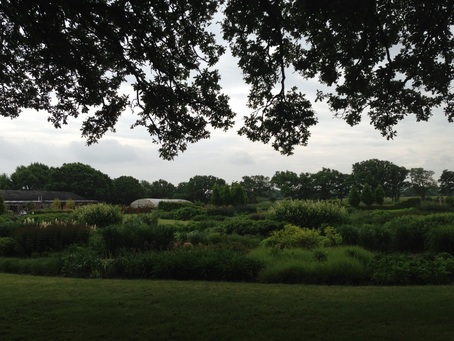
Sussex Priarie Gardens was started by Pauline and Paul McBride in May 2008 from a field near Henfield in West Sussex. Astoundingly they planted it in two weeks with the help of 40 friends – including the then ambassador to Luxembourg. Some cooked, some planted, all had a fabulous time.
Paul studied horticulture in Scotland and then worked as a gardener for the Commonwealth Graves Commission in France, where he met Pauline who was sorting out accomodations for British gardeners coming to maintain cemeteries from the First and Second World Wars. They worked for 12 years for a family outside Luxembourg, creating a 30-acre garden for them before embarking on their own adventure.
They were inspired by Piet Oudolf, and actually gardened beside him to create a 54,000 sq ft border with over 20,000 plants. They familiarized themselves with his favorites - Sanguisorba officinalis, Deschampsia cespitosa 'Goldtau’, various thalictrums and molinias are major players in their own garden.
The Sussex land was part of Pauline’s late father’s farm. They planned it in a romantic, naturalistic style, using bold groups of flowering plants and grasses that as Paul has said “have a close relationship in form, foliage and simplicity of flower with native or non-native counterparts”. The colors used are soft and muted with an informal style that blends with the Sussex landscape and the four acres of borders attract a rich diversity of wildlife.
When they inherited the land there was a scant 3” of topsoil over yellow/blue clay. To encourage plants and not weeds they drained the entire site, putting in drainage pipes every 33’ and ploughed the beds before rototilling in 1,000 tons of grean waste they got free from a composting firm to ensure a rich tilth that their amateur gardening friends could plant into.
The planted over 30,000 plants, 90% of which they propogated themselves, and they continue to apply a thick mulch of green waste annually – although the they let it sit for two years before using it as it is so rich. This has helped keep the weeds down, but they also have two full time gardeners and an army of volunteers. The beds are designed in a broken spiral formation with a wide path down the center, with a field of sheep at one end and a great tea room/nursery/gift shop at the other.
The borders themselves are planted with huge block plantings of the same species with 3’ paths running through them that narrow as the season progresses. The plants vary in height due to the differences of soil fertility, some clumps such as Persicaria polymorpha, are giants and you are dwarfed walking among them, the proximity of the plantings means you can experience everything close up – sounds, fragrances, colors, shapes.
As the perennials chosen mature quickly the garden is never static. The beds also have different characteristics. The pond bed is aptly named for the three ponds in it, the North and South Mounds were created from the drainage soils and are mainly purple and yellow colors, the Cleat Border was inspired by James van Sweden and Wolfgang Oehme and is composed of large blocks of grasses and rudbeckieas. The “Wee bed” had a plethora of echinaceas in candyfloss colors.
All the beds are punctuated by sculptures, either commissioned or added by local artists. Some of them such as the wire balloons on the lawn are designed and made by Pauline – my favorite were flowers made from old vinyl records that dot one of the central beds. There are also sheep, pigs and chickens; a bed and breakfast; a garden design business; and an enticing nursery. I couldn’t resist buying a wonderful sheep tea cosy knitted by Pauline’s mother from the wool from their flock.
Sussex Prairies (sussexprairies.co.uk)
Paul studied horticulture in Scotland and then worked as a gardener for the Commonwealth Graves Commission in France, where he met Pauline who was sorting out accomodations for British gardeners coming to maintain cemeteries from the First and Second World Wars. They worked for 12 years for a family outside Luxembourg, creating a 30-acre garden for them before embarking on their own adventure.
They were inspired by Piet Oudolf, and actually gardened beside him to create a 54,000 sq ft border with over 20,000 plants. They familiarized themselves with his favorites - Sanguisorba officinalis, Deschampsia cespitosa 'Goldtau’, various thalictrums and molinias are major players in their own garden.
The Sussex land was part of Pauline’s late father’s farm. They planned it in a romantic, naturalistic style, using bold groups of flowering plants and grasses that as Paul has said “have a close relationship in form, foliage and simplicity of flower with native or non-native counterparts”. The colors used are soft and muted with an informal style that blends with the Sussex landscape and the four acres of borders attract a rich diversity of wildlife.
When they inherited the land there was a scant 3” of topsoil over yellow/blue clay. To encourage plants and not weeds they drained the entire site, putting in drainage pipes every 33’ and ploughed the beds before rototilling in 1,000 tons of grean waste they got free from a composting firm to ensure a rich tilth that their amateur gardening friends could plant into.
The planted over 30,000 plants, 90% of which they propogated themselves, and they continue to apply a thick mulch of green waste annually – although the they let it sit for two years before using it as it is so rich. This has helped keep the weeds down, but they also have two full time gardeners and an army of volunteers. The beds are designed in a broken spiral formation with a wide path down the center, with a field of sheep at one end and a great tea room/nursery/gift shop at the other.
The borders themselves are planted with huge block plantings of the same species with 3’ paths running through them that narrow as the season progresses. The plants vary in height due to the differences of soil fertility, some clumps such as Persicaria polymorpha, are giants and you are dwarfed walking among them, the proximity of the plantings means you can experience everything close up – sounds, fragrances, colors, shapes.
As the perennials chosen mature quickly the garden is never static. The beds also have different characteristics. The pond bed is aptly named for the three ponds in it, the North and South Mounds were created from the drainage soils and are mainly purple and yellow colors, the Cleat Border was inspired by James van Sweden and Wolfgang Oehme and is composed of large blocks of grasses and rudbeckieas. The “Wee bed” had a plethora of echinaceas in candyfloss colors.
All the beds are punctuated by sculptures, either commissioned or added by local artists. Some of them such as the wire balloons on the lawn are designed and made by Pauline – my favorite were flowers made from old vinyl records that dot one of the central beds. There are also sheep, pigs and chickens; a bed and breakfast; a garden design business; and an enticing nursery. I couldn’t resist buying a wonderful sheep tea cosy knitted by Pauline’s mother from the wool from their flock.
Sussex Prairies (sussexprairies.co.uk)
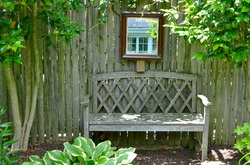
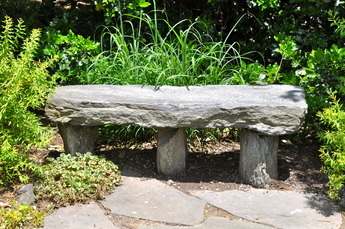
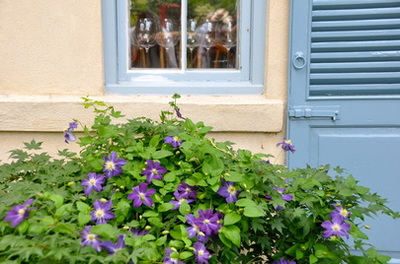
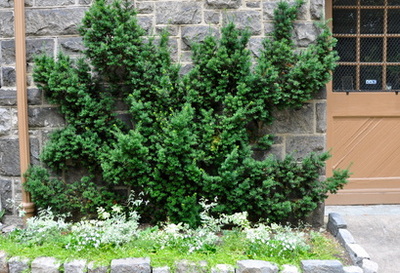
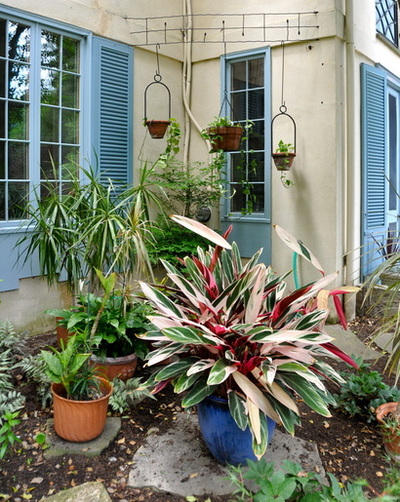
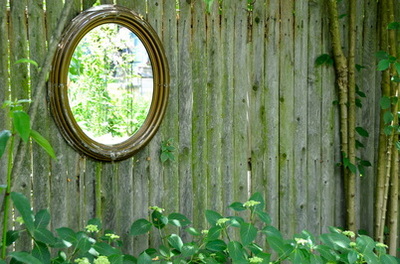
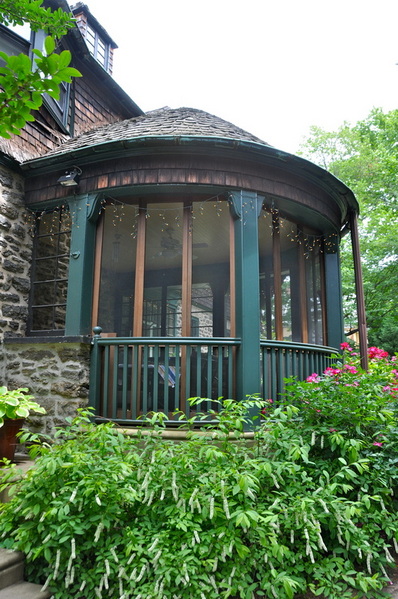
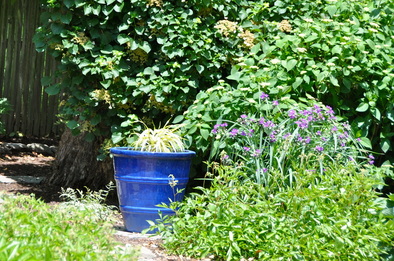
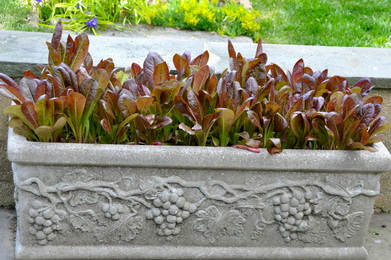
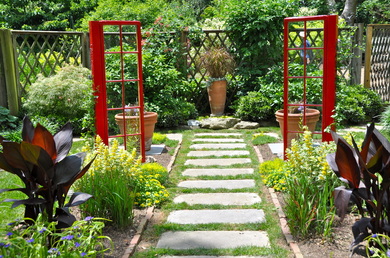
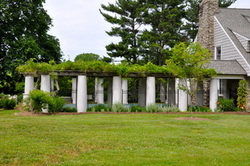
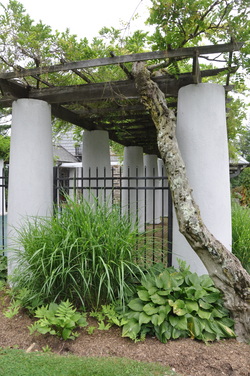

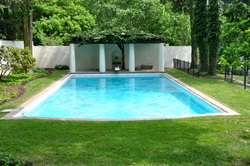
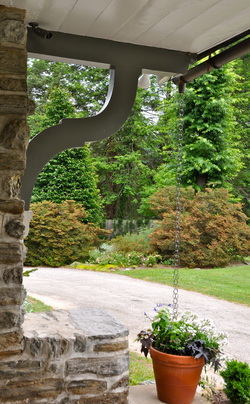
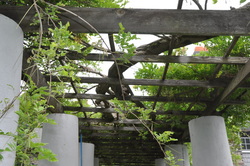
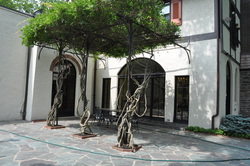
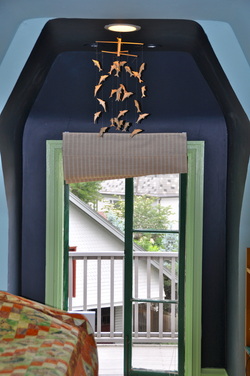
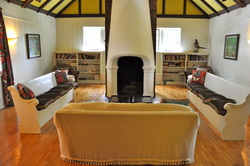
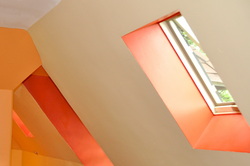
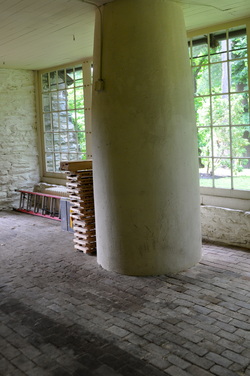
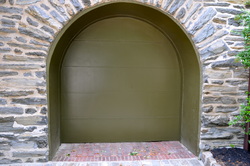

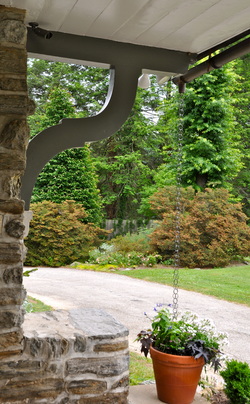
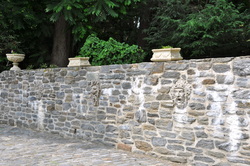
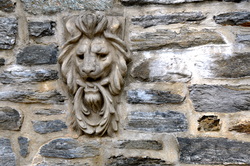
 RSS Feed
RSS Feed
